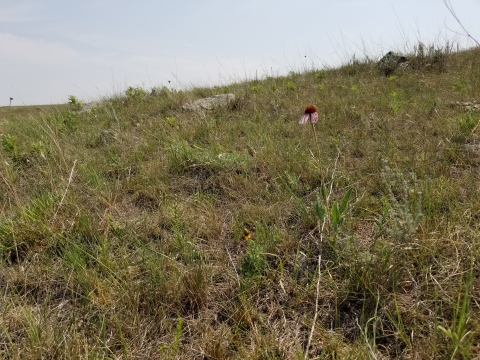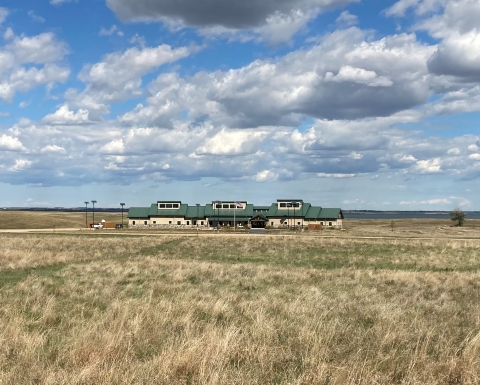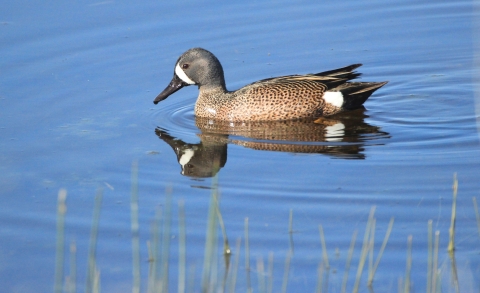Location and Contact Information
About Us
Area History
The White Lake territory was considered open range for grazing of sheep and cattle prior to 1907. The land that is currently within the boundary of White Lake National Wildlife Refuge was originally homesteaded in 1907 and the grazing of sheep and cattle continued until 1910 when the first farming began.
The original pattern of subsistence farming established by the homesteaders continued until World War I. Following the war, high grain prices encouraged large scale wheat production, and as a result, some tracks of marginal land were brought into crop production. Drought and the Great Depression of the 1930's ended the wheat boom temporarily and initiated another period of subsistence farming.
In 1936, a dam and spillway were constructed on a branch of the North Fork of the Cannonball River, by the Bureau of Biological Survey and the Works Progress Administration (WPA). A secondary (emergency) spillway was completed in 1938. The dam impounded approximately 190 acres of water.
In 1941, the area was established as an Easement Refuge for the protection and preservation of migratory waterfowl, where it remained under easement status until January 1959 when fee title to the first parcel of land was obtained, and the remainder at a later date. This entire area is now vested in the United States as White Lake National Wildlife Refuge.
The name 'White Lake' originated from the fact that the lakebed contains bentonite clay, which has a grayish-white color when dry. The lake averages less than four feet in depth, but provides excellent habitat for migratory birds, in an area of North Dakota that has very few natural wetlands.
What We Do
The primary purpose of White Lake National Wildlife Refuge is to provide suitable habitat nesting and brood rearing habitat for waterfowl, as well as other wildlife. To help plants and wildlife, refuge staff use a variety of habitat management techniques to maintain, recover or enhance plant and wildlife values. Refuge staff carefully consider any management techniques and employ them in varying degrees according to the situation. Several habitat management tools are used to maintain and enhance habitat, including livestock grazing, prescribed burning, noxious weed control, mowing, seeding, and the most important tool for refuge wetlands – water management.
Refuges deploy a host of scientifically sound management tools to address biological challenges. At this field station, our conservation toolbox includes:
- Planning – Comprehensive Conservation Plan
- Compatibility Determinations
- Cultural Resources
- Fire Management
- Grazing
- Invasive Species
- Inventory and Monitoring
- Law Enforcement
- Pesticide Management
- Species Research
- Water Management
Our Organization
The U.S. Fish and Wildlife Service manages an unparalleled network of public lands and waters called the National Wildlife Refuge System. With over 565 refuges and 38 wetland management districts spanning the country, this system protects iconic species and provides some of the best wildlife viewing opportunities on Earth.
Our Species
The Refuge lies in gently rolling mixed grass prairie in a semi-arid region of North Dakota. It is an oasis for many species of wildlife - with concentrations of waterfowl and shorebirds during the spring and fall migration. The grasslands offer secluded nesting areas for waterfowl, shorebirds, songbirds, raptors, and more. The wetlands provide a productive area for hens to bring their ducklings to feed on the valuable invertebrates that provide high protein meals. Resident wildlife species such as deer, coyote, and jackrabbits also find the habitat they need to make this their year-round home.







